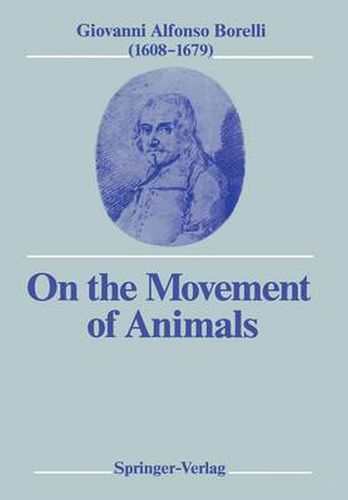Readings Newsletter
Become a Readings Member to make your shopping experience even easier.
Sign in or sign up for free!
You’re not far away from qualifying for FREE standard shipping within Australia
You’ve qualified for FREE standard shipping within Australia
The cart is loading…






This title is printed to order. This book may have been self-published. If so, we cannot guarantee the quality of the content. In the main most books will have gone through the editing process however some may not. We therefore suggest that you be aware of this before ordering this book. If in doubt check either the author or publisher’s details as we are unable to accept any returns unless they are faulty. Please contact us if you have any questions.
De Motu animalium is sometimes referred to in the medical literature. But who has read it? The book, originally published in Latin, seemingly constitutes the very first treatise on biomechanics. The author, Giovanni Alfonso Borelli (1608 - 1679), was professor of mathematics and physics in Pisa where he worked with Malpighi, who was professor of theoretical medicine and focused Borelli’s interest on the movements of living creatures. This was the time of Galileo, Descartes, Newton and many others, when sciences exploded, sometimes leading to conflicts with religious authorities. De Motu animalium, Borelli’s life work, has two parts. In the first part, he analyses the action of the muscles, the movements of the limbs and motions of man and animals, including skating, running, jumping, swimming and flying. The second part deals with what is now called physiology, considered from the point of view of a mechanist: heart beat, blood circulation, breathing, separation of urine from the blood in the kidneys, liver function, reproduction, fatigue, thirst, hunger, fever, and so on. This work shows Borelli to be a genial precursor. He expresses his opinion as a mathematician on problems which afterwards further stimulated the curiosity and endeavours of many generations of researchers. This book will be welcomed by anybody who is interested in the working of living bodies and in the history of human knowledge.
$9.00 standard shipping within Australia
FREE standard shipping within Australia for orders over $100.00
Express & International shipping calculated at checkout
This title is printed to order. This book may have been self-published. If so, we cannot guarantee the quality of the content. In the main most books will have gone through the editing process however some may not. We therefore suggest that you be aware of this before ordering this book. If in doubt check either the author or publisher’s details as we are unable to accept any returns unless they are faulty. Please contact us if you have any questions.
De Motu animalium is sometimes referred to in the medical literature. But who has read it? The book, originally published in Latin, seemingly constitutes the very first treatise on biomechanics. The author, Giovanni Alfonso Borelli (1608 - 1679), was professor of mathematics and physics in Pisa where he worked with Malpighi, who was professor of theoretical medicine and focused Borelli’s interest on the movements of living creatures. This was the time of Galileo, Descartes, Newton and many others, when sciences exploded, sometimes leading to conflicts with religious authorities. De Motu animalium, Borelli’s life work, has two parts. In the first part, he analyses the action of the muscles, the movements of the limbs and motions of man and animals, including skating, running, jumping, swimming and flying. The second part deals with what is now called physiology, considered from the point of view of a mechanist: heart beat, blood circulation, breathing, separation of urine from the blood in the kidneys, liver function, reproduction, fatigue, thirst, hunger, fever, and so on. This work shows Borelli to be a genial precursor. He expresses his opinion as a mathematician on problems which afterwards further stimulated the curiosity and endeavours of many generations of researchers. This book will be welcomed by anybody who is interested in the working of living bodies and in the history of human knowledge.